Mixed Blessings
by John Percival
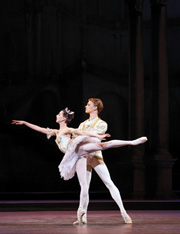 We think of “The Sleeping Beauty” as an old ballet, a relic from the great days of the Imperial Russian theatres. But I am reminded that when I first saw it, February 1946 at Covent Garden, “Beauty” was a few years younger than the present age of several ballets that were made in my time and are still given in versions very like their original: Ashton's “Symphonic Variations” for instance, Balanchine's “Symphony in C”, Robbins's “Fancy Free” or Petit's “Jeune Homme at la Mort”. Yet every company thinks it can change “Beauty” whenever it likes. Why should 19th century ballets have less protection than 20th century works? Just a thought ...READ MORE
We think of “The Sleeping Beauty” as an old ballet, a relic from the great days of the Imperial Russian theatres. But I am reminded that when I first saw it, February 1946 at Covent Garden, “Beauty” was a few years younger than the present age of several ballets that were made in my time and are still given in versions very like their original: Ashton's “Symphonic Variations” for instance, Balanchine's “Symphony in C”, Robbins's “Fancy Free” or Petit's “Jeune Homme at la Mort”. Yet every company thinks it can change “Beauty” whenever it likes. Why should 19th century ballets have less protection than 20th century works? Just a thought ...READ MORE
New York City Ballet Kicks Off Winter Season
by Susan Reiter
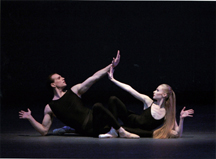 Some galas are about glitz and star power; this one certainly didn’t aim for that. There was no true bona fide star turn until the evening’s final entry, when Damian Woetzel lit up the stage with his exuberant, engaging performance in “Stars and Stripes.” It was certainly not a gala aimed at trotting out all the principal dancers, since only 11 of the 23 on the roster appeared on stage. READ MORE
Some galas are about glitz and star power; this one certainly didn’t aim for that. There was no true bona fide star turn until the evening’s final entry, when Damian Woetzel lit up the stage with his exuberant, engaging performance in “Stars and Stripes.” It was certainly not a gala aimed at trotting out all the principal dancers, since only 11 of the 23 on the roster appeared on stage. READ MORE
Children are the Stars in NYCB's "The Nutcracker"
by Gay Morris
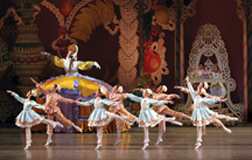 When George Balanchine’s “The Nutcracker” first made its appearance in 1954, New York Times critic John Martin said that it was about and for children, which he considered a fatal flaw. Balanchine would certainly have agreed that he focused “The Nutcracker” on children, and regardless of Martin’s assessment, time has proved the wisdom of his decision. READ MORE
When George Balanchine’s “The Nutcracker” first made its appearance in 1954, New York Times critic John Martin said that it was about and for children, which he considered a fatal flaw. Balanchine would certainly have agreed that he focused “The Nutcracker” on children, and regardless of Martin’s assessment, time has proved the wisdom of his decision. READ MORE
Confetti
by George Jackson
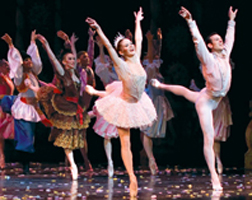 A "Nutcracker" at this time of the year is a must for the Kennedy
Center. Having failed to please with the Kirov's weird one and
American Ballet Theatre's tacky version, it is back to the Joffrey's
now. Washington could have done worse than this import from Chicago.
A "Nutcracker" at this time of the year is a must for the Kennedy
Center. Having failed to please with the Kirov's weird one and
American Ballet Theatre's tacky version, it is back to the Joffrey's
now. Washington could have done worse than this import from Chicago.
The old fashioned Yankee flavor that permeated Robert Joffrey's production when it was new 19 years ago has dissipated somewhat. Instead, new fangled notions of the politically correct sort are prominent — a boy in a wheelchair among the "real world" party guests of the opening scene and, throughout, the children representing different races. But what's wrong with that? Society is more inclusive today. Moreover, we can't segregate the current cast for history's sake. The youngsters (rehearsed by Rhodie Jorgenson) were vivid and danced well. I do, though, wish that the wheelchair kid had seemed more comfortable in his role on opening night and that young members of the audience weren’t being fooled about the realities of the 19th Century. This is where program notes and pre-performance talks can help. READ MORE
Tribute for Maria Tallchief
by Dale Brauner
 The evening’s remarks by Tallchief were mostly nothing new to ballet aficionados. She explained that Balanchine was very concerned with port de bras: “You should turn your head as if you are receiving a kiss on your cheek from your fa ther.” And how she wanted to have a long dramatic death as Eurydice in Balanchine’s “Orpheus,” but Stravinsky put an end to that: “You have four counts.” And how “The Firebird” was the first big hit of the fledgling New York City Ballet. Tallchief, a classically trained pianist, even revealed that former husband Balanchine, while he played the piano and was noted for his musicianship, was not so hot on the keyboards.. READ COMPLETE ARTICLE
The evening’s remarks by Tallchief were mostly nothing new to ballet aficionados. She explained that Balanchine was very concerned with port de bras: “You should turn your head as if you are receiving a kiss on your cheek from your fa ther.” And how she wanted to have a long dramatic death as Eurydice in Balanchine’s “Orpheus,” but Stravinsky put an end to that: “You have four counts.” And how “The Firebird” was the first big hit of the fledgling New York City Ballet. Tallchief, a classically trained pianist, even revealed that former husband Balanchine, while he played the piano and was noted for his musicianship, was not so hot on the keyboards.. READ COMPLETE ARTICLE
Bowen McCauley Dance
by George Jackson
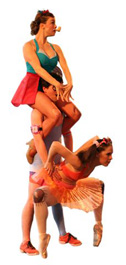 The tilt of a neck or the hemline of a dress may remind us of the elusive past, but so can titles and musical timbres. Four of the premieres on this five part program prodded memory in at least one way. “Souvenirs — Souvenirs”, Juan Carlos Rincones’s first new choreography in some time, did so stylishly by way of the fashions worn, the accompanying chansons, the very name of the piece and, not least, the dancing. READ MORE
The tilt of a neck or the hemline of a dress may remind us of the elusive past, but so can titles and musical timbres. Four of the premieres on this five part program prodded memory in at least one way. “Souvenirs — Souvenirs”, Juan Carlos Rincones’s first new choreography in some time, did so stylishly by way of the fashions worn, the accompanying chansons, the very name of the piece and, not least, the dancing. READ MORE